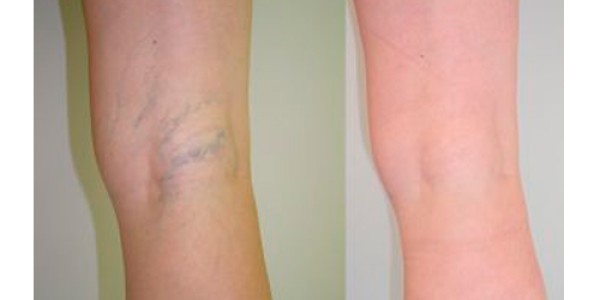
TREATMENT OF VARICOSE VEINS (SCLEROTHERAPY)
WHAT IS A VARICOSE VEIN?
The veins; are the blood vessels carrying the blood from the periphery to the heart. There are valves in these vessels that allow the flow of blood to be one-way towards the heart. A varicose vein is the gradual enlargement of a normal vein over a long period of time due to valvular insufficiencies.
The vein becomes convoluted and can no longer perform its normal function. This is a disease of the veins. It causes serious complaints in some individuals while other individuals may not complain at all.
A varicose vein is the gradual enlargement of a normal vein over a long period of time due to valvular insufficiencies.
It’s quite common in society. Every fifth or sixth person is diagnosed with varicose veins. We can see the varicose veins with bare eyes and feel the big ones on palpation. For this reason, varicose veins are easily diagnosed. Although varicose veins are often perceived as a cosmetic problem by the majority of individuals, they can, in fact, disrupt the quality of life by causing pain, fatigue, burning, cramping, or swelling in the ankles. Larger varicose veins may occasionally thrombose, bleed, or may lead to ulcerations in cases with long-term durations.
Depending on their sizes and constitutions, the varicose veins are classified into three types: Large, medium-sized, and capillary varicose veins.
Varicose veins in the legs can be seen in every individual, but are more common in the following people:
- Individuals with family histories of varicose veins (congenital)
- Women
- Women who gave birth (especially if the number of deliveries is 2 or more)
- Overweight individuals (especially women)
- Individuals who need to stand up (such as teachers) or who need to sit down for long periods of time due to the conditions at work.
- If varicose veins cause complaints or if their appearances are disturbing for you, treatment is recommended.
TREATMENT OF THE VARICOSE VEINS
Different methods are applied in the treatment of varicose veins. Sclerotherapy is an effective and reliable method among these methods.
SCLEROTHERAPY is the process of destroying the varicose veins by delivering medicine into it. This treatment of varicose veins is also known as the needle treatment.
If the medicine is administered by foaming, then it is called as the foam therapy. Actually, this is another kind of sclerotherapy. The drug acts on the interior parts of the veins after the administration causing them to sclerose and vanish.
Varicose veins are not required by the body. For this reason, obliteration of them will not harm individuals at all. On the contrary, the individual is relieved from the complaints.
The vein is immediately sclerosed just after the treatment, but it takes time for them to completely disappear. This period varies from individual to individual, and sometimes complete disappearance of the varicose veins may take a few months. Sclerotherapy is used in the treatment of all types of varicose veins, namely the large-size, moderate-size, and the capillary ones. However, it is not recommended for the treatment of the main veins (saphenous vein).
Mainly it is used in the treatment of capillary and moderate-size varicose veins. It is the most effective treatment for these two types of varicose veins and therefore, it is the treatment of the first choice.
In addition, it is used as an adjunctive therapy to treat the remaining large varicose veins following the treatment of the major ones by intravenous RF or laser treatments.
THE PROCEDURE
Sclerotherapy is a procedure that does not require general anesthesia.
Various solutions are used for sclerotherapy. The concentrations of chemical substances given to varicose veins and capillary vessels vary depending on the variations in their diameter sizes. Sclerotherapy is a process that takes place in a very short time. In general, the application takes 20-30 minute in a session. The number of sessions varies according to the intensity of the varicose veins. Patients can immediately go back to their daily activities. The redness and feeling of pruritus developing in the application area disappear within 24 hours. Complete healing can last for an average of 4 to 6 weeks, although individual differences may occur.
SIDE EFFECTS
Very rarely there may be side effects such as mild pain and bruising. If the procedure is applied to larger veins, it may cause clot formation (thrombophlebitis) within the varicose veins. The clot causes both pain and the prolongation of the wound healing process. Other visible side effects are the medication associated allergies, discolorations in the skin, transient edema, and swelling.
